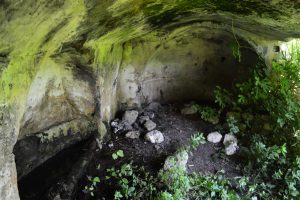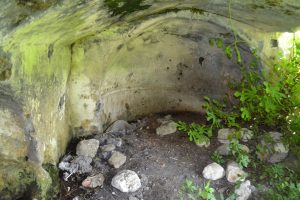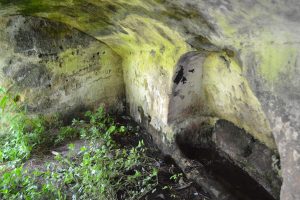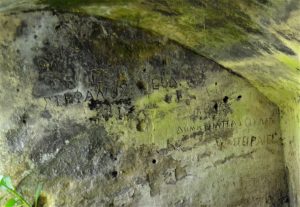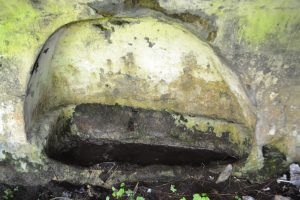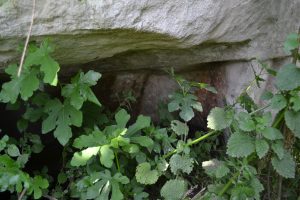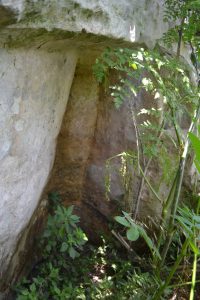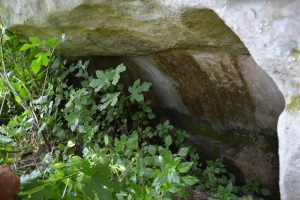Archive for January, 2019
The harbour at Kıyıköy is separated from the main town by a precipitous cliff studded with Byzantine fortifications. Presumably, the upper town was well supplied with churches, but these have now disappeared. At the base of the cliff (41.632909228702, 28.096977436704) are the remains of two small rock-cut churches that were, presumably, for the use of seafarers using the harbour. These are now protected from the attentions of the casual trespasser by ridiculously thick and spiky vegetation.
The easternmost church measures about 4 metres by 7 metres. It is open to the south and has the usual apse carved into the eastern end. The stonemasonry is competent, but unadorned apart from a raised belt currently lying about 20cm from floor level. This would have been significantly above the original floor level. There are some interesting graffiti in the church, now of historical significance in themselves. One piece in the apse is dated 1898.
The western end of the church has a flat wall and is covered with Greek graffiti.
Two of the more finely executed of these are a cross and the letters STEFANOS. This may hint at a later dedication of the church but is more likely to be the name of a visitor with the urge to perpetuate his name.
An arched niche carved in the northern wall is now at ground level, but would have been at waist height before sedimentation filled in much of the church. The niche has what appears to be a tomb in the bottom, now filled with water.
A short distance to the west is another, less impressive, church. As with the eastern church, it is aligned east-west and opens to the south. There is also a niche in the northern wall.
This rock-cut cavern is especially difficult to access because of the necessity of lacerating oneself on the barricading vegetation that protects this site better than the most vicious razor wire.
The church appears to be of similar dimensions to its eastern counterpart, but the carving is of less delicacy and there are consequently fewer features of immediate interest.
It is difficult to gain any accurate date of establishment of these churches but they were presumably built in the 6th Century in the heyday of Kıyıköy, at the height of Black Sea trade in the reign of Justinian.
References
Civelik, E. (2016) Kıyıköy Liman Oyma Kilisesi (Doğu). Kırklareli Kültür Varlıkları Envanteri. Available online at: http://www.kirklarelienvanteri.gov.tr/anitlar.php?id=84 Accessed 31st Jan 2019
Civelik, E. (2016) Kıyıköy Liman Oyma Kilisesi (Batı). Kırklareli Kültür Varlıkları Envanteri. Available online at: http://www.kirklarelienvanteri.gov.tr/anitlar.php?id=501 Accessed 31st Jan 2019

